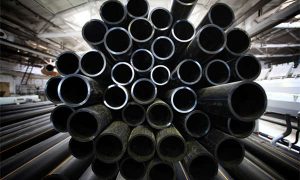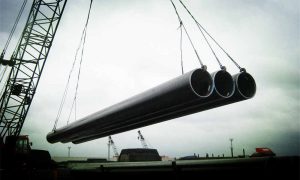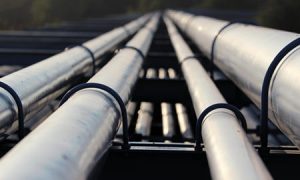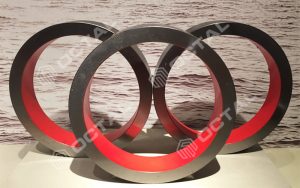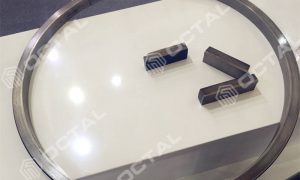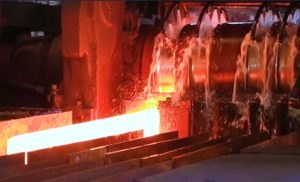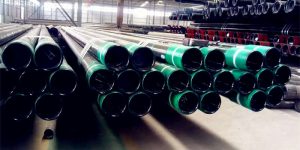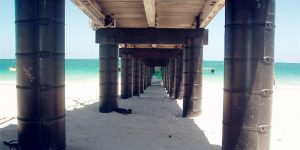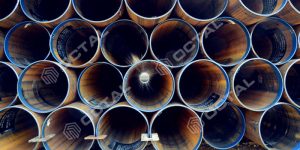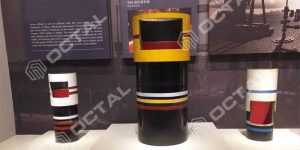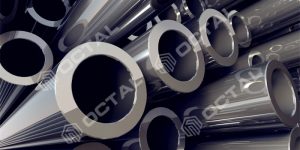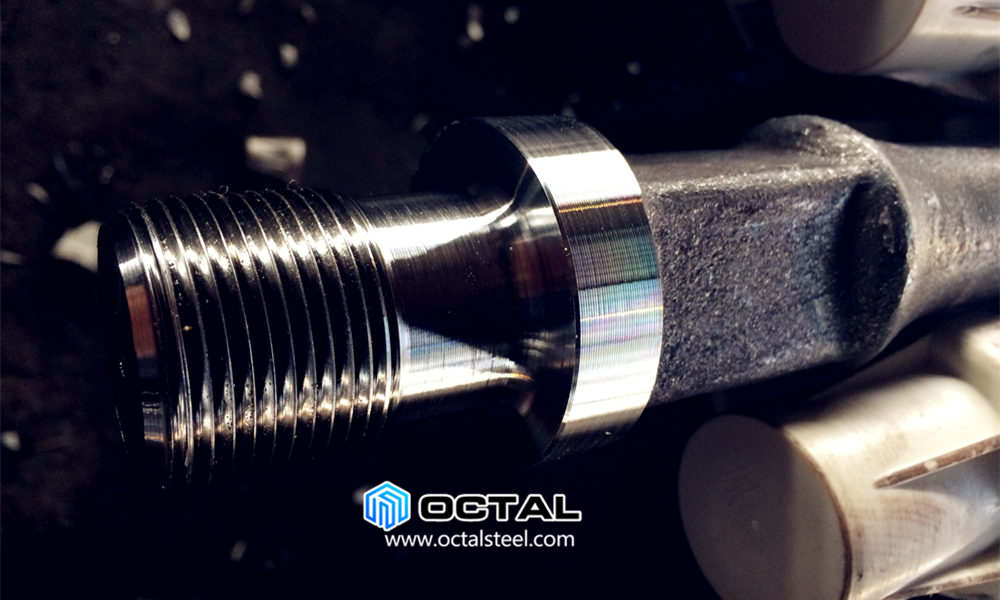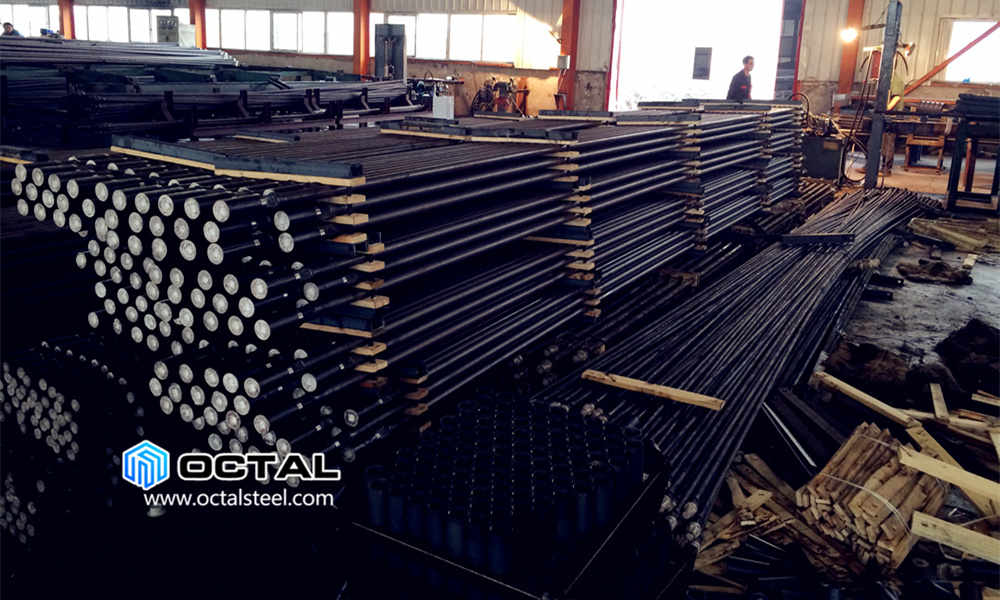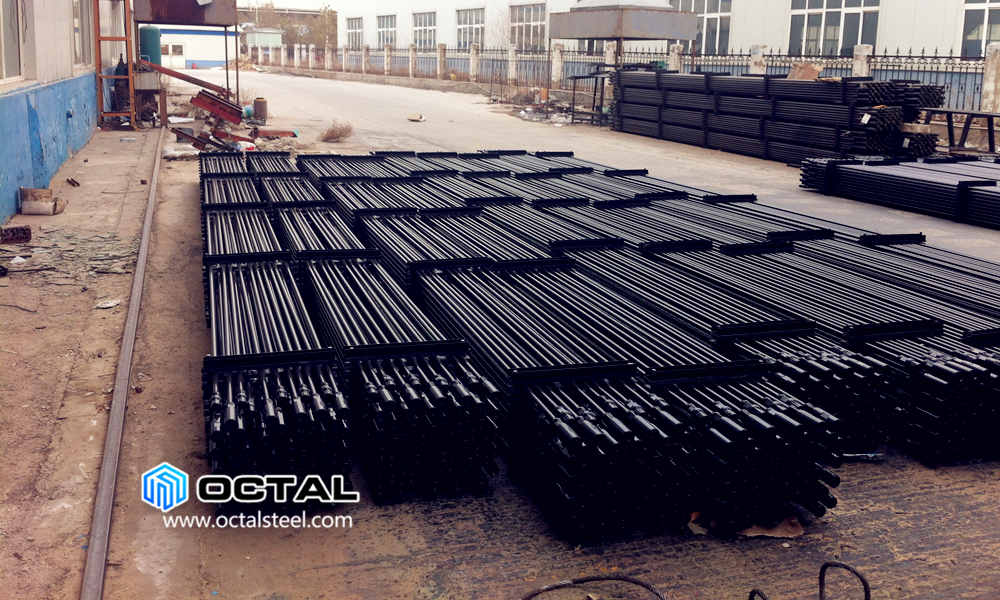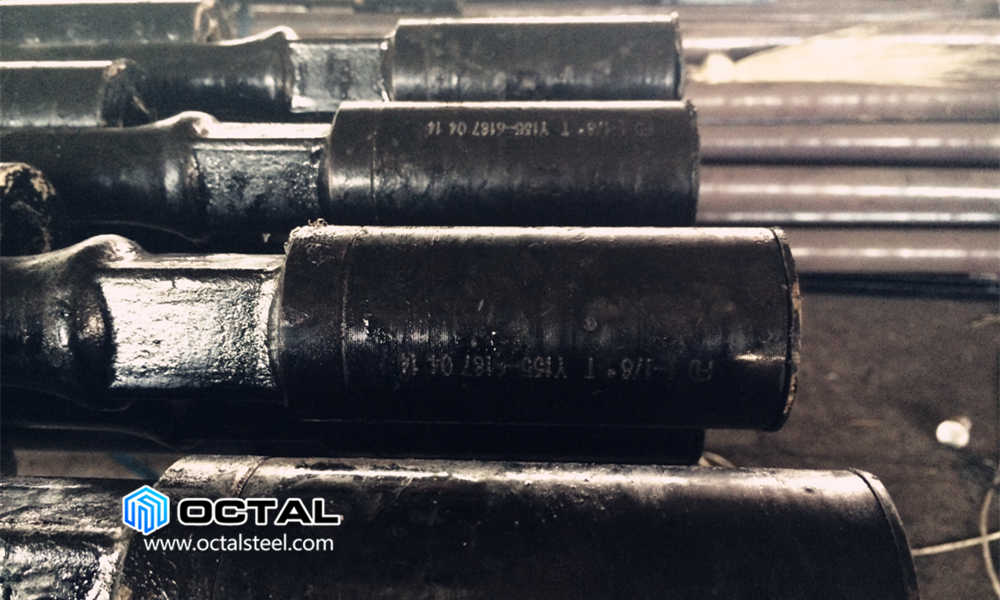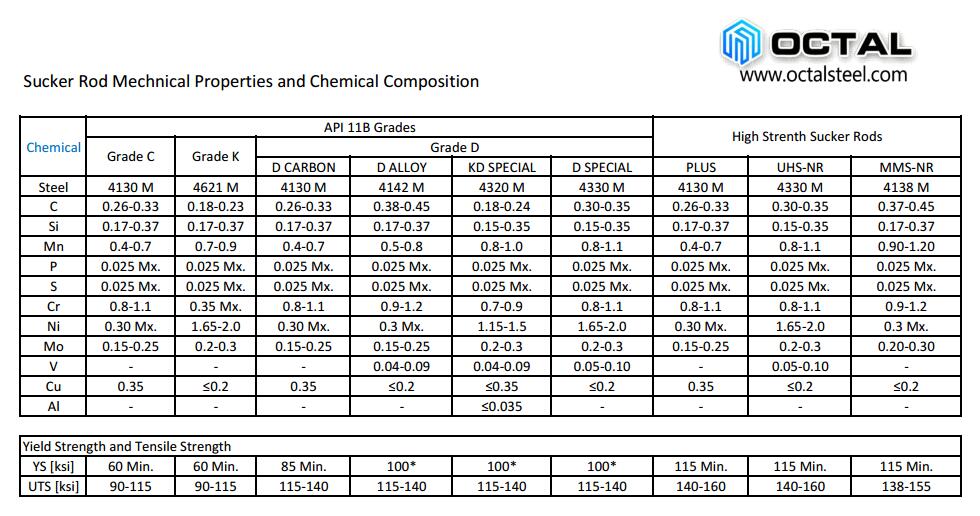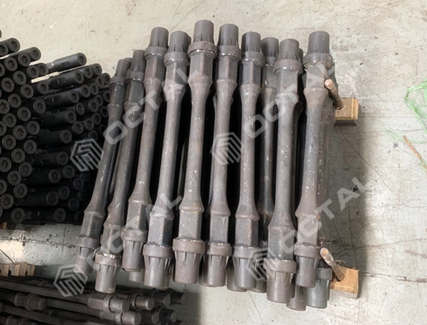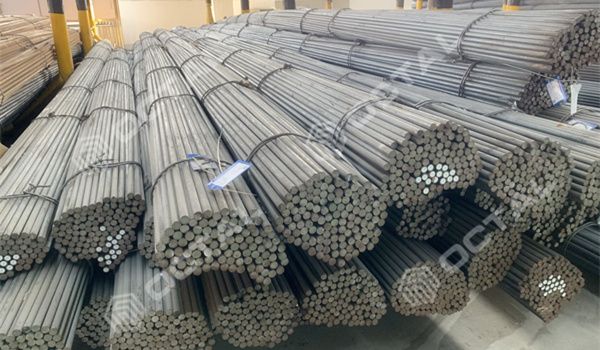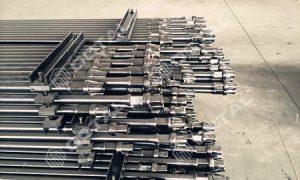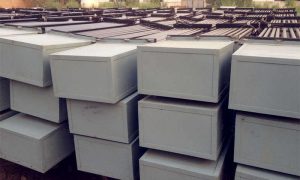Sucker Rod for Sale in API 11B
Octal has API 11B sucker rods for sale in below grade and dimensions.
Outer Diameters: 5/8” to 1 3/4”.
Grades: C, K, D, KD, HL, HY.
Material: AISI 4130M, AISI 4138M, AISI 4330M, AISI 4142M, AISI 8630
Sucker Rods Length: 25 ft or 30 ft
Pony Rods Length: 2 ft to 10 ft.
Ends Type: Class T coupling, Reduced Diameter, SM coupling.
Rods Type: Sucker Rods, Pony Rods, Polished Rods, Sinker Bar, Drive Sucker Rod, Centralized Sucker Rod, Anti-Twist Sucker Rod
sucker rod is a long, slender rod used in the oil and gas industry, primarily in pumping systems for extracting oil from wells. It connects the surface pumping unit to the downhole pump, transferring the mechanical energy needed to lift the oil to the surface. Sucker rods are typically made of steel and are designed to withstand the harsh conditions of the well environment, including high pressures and corrosive fluids.

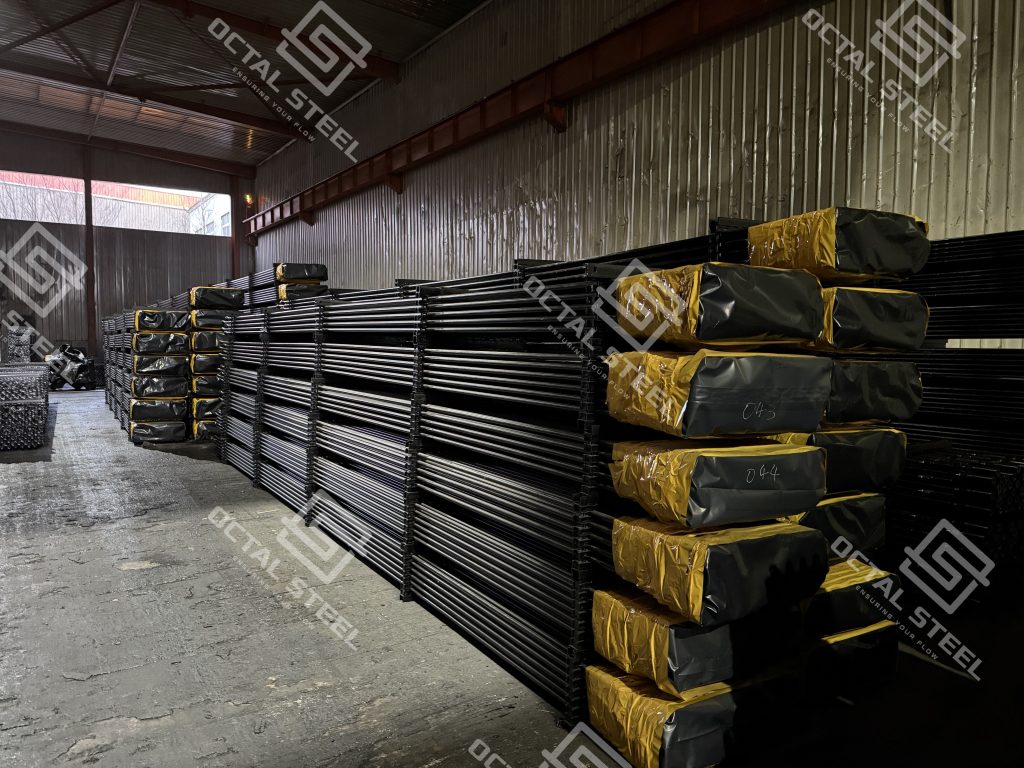
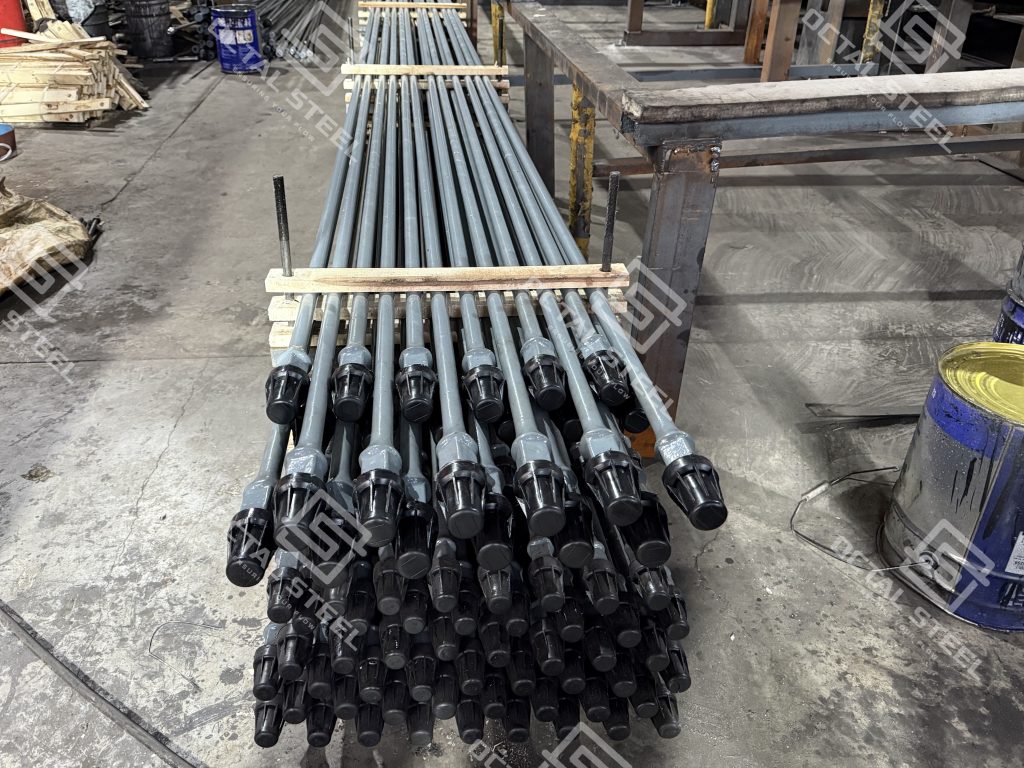
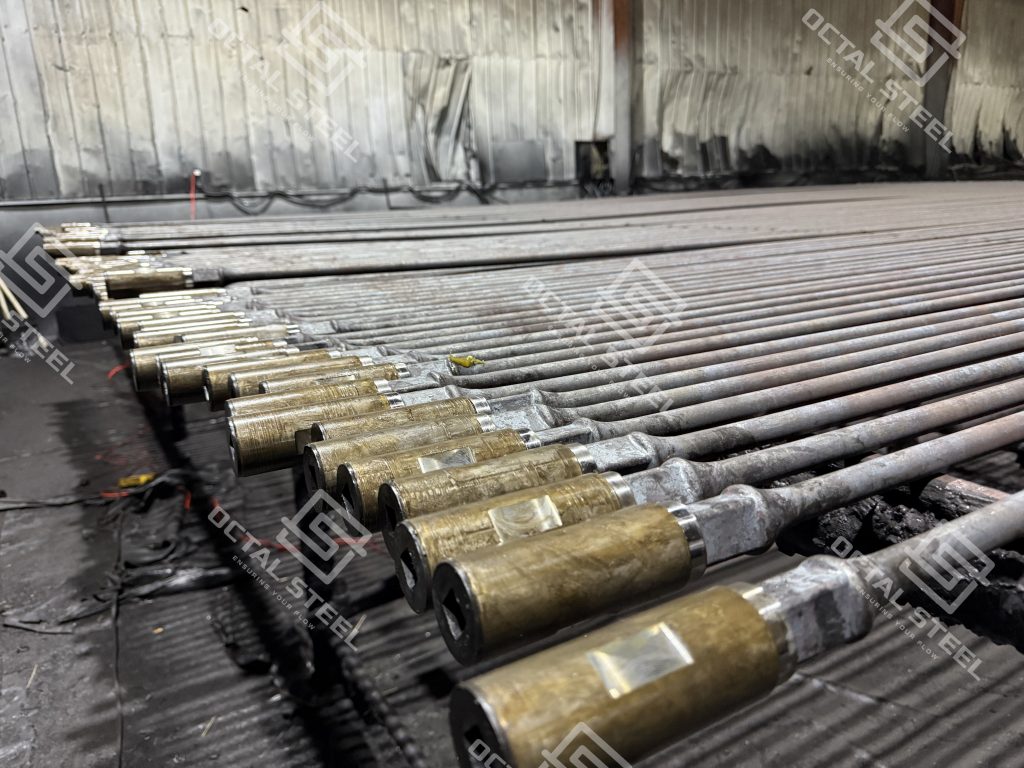
Sucker rod in API 11B for sale
Octal has high strength API 11B sucker rod for sale in Grade C, K, D, KD, HL, HY. Material available in alloy steel AISI 4130M, AISI 4138M, AISI 4330M, AISI 4142M, AISI 8630, with high strength and anti-torsion performances. API 11B specification includes the technical requirements for Sucker Rod, Pony Rod, Drive Rod, Polished Rod, Sinker Bar.
Sucker Rod Specifications / Common Features
Construction
Made of high-quality carbon or alloy steel to handle strong pulling and pushing forces in drilling and production. Available in different grades and sizes.
Length and Diameter
Typically 25–30 feet (7.6–9.1 m) long. Diameters commonly range from 5/8 inch to 1-1/4 inches (15.9–31.8 mm).
Types
Conventional sucker rod (solid)
Hollow sucker rod (has a hollow center for fluid flow)
Continuous sucker rod (one long piece with no threaded joints)
Function
Transmit mechanical power from the surface to downhole pumping equipment.
Pumping Mechanism: In a typical setup, the sucker rod is attached to a pumping unit, such as a pumpjack, which reciprocates the rods up and down to create the necessary pumping action. This action helps lift the oil or gas to the surface.
Pumping System Basic Operation Flow as below
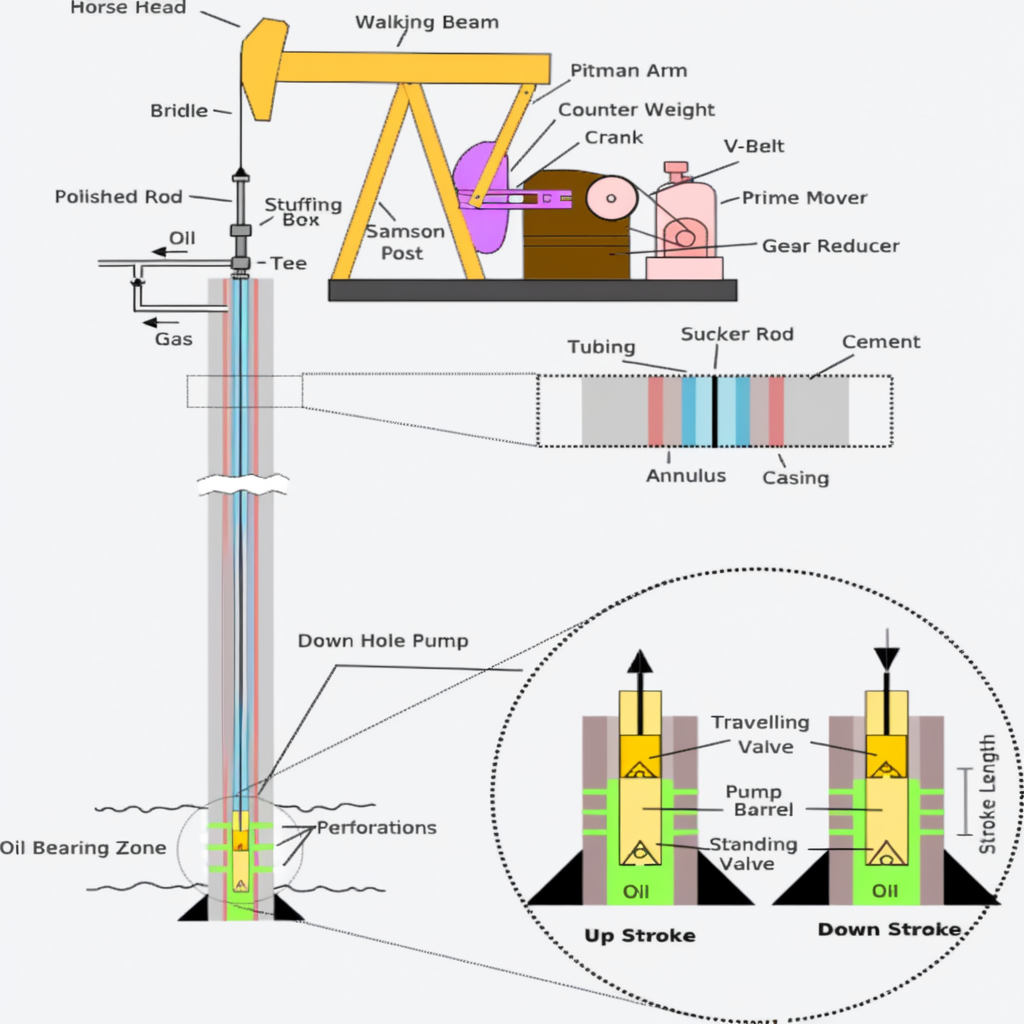
- System Overview: A crank and connecting rod drive the sucker rod to move up and down in deep wells.
- Operating Mechanism:
- Downstroke: Creates negative pressure.
- Upstroke: Lifts oil to the surface through production tubing.
Technical Characteristics:
- Operating Load: 15-45 kN
- Temperature Range: -40°C to 150°C
- Suitable for: Conventional oil fields, offshore platforms, high water cut wells
- Key Advantages: High strength, corrosion resistance, precise connections
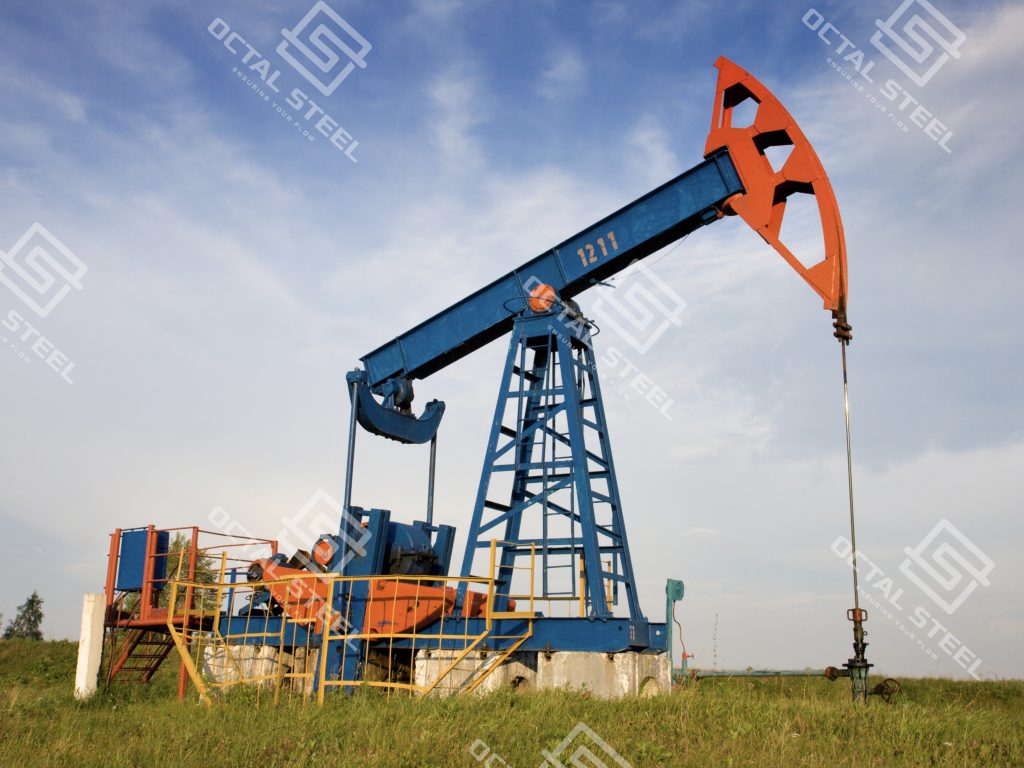
Threaded Connections
Sucker rods have threaded connections on each end, allowing them to be joined together to form a continuous string. The connections are usually made using a coupling or a rod clamp, ensuring a secure and leak-free connection.
Corrosion Protection
Sucker rods are susceptible to corrosion due to exposure to well fluids and harsh downhole conditions. To protect against corrosion, the rods are often coated with protective coatings or treated with corrosion inhibitors.
Maintenance and Inspection
Regular maintenance and inspection of sucker rods are essential to identify any signs of wear, corrosion, or damage. Damaged rods should be replaced promptly to ensure safe and efficient well operations.
Sucker Rod Manufacturing Processes

- Raw material inspection
- Straightening, precise cutting to length
- End heating → forging forming → edge trimming
- Whole-surface quenching → tempering
- Machining (turning/threading/milling with square corners)
- Shot blasting cleaning
- Surface coating and curing
- Comprehensive quality inspection (dimensions, NDT, performance)
- Press-fit sleeve/crimping
- Put on protective cap
- Packaging and warehousing
Key processes Forging, Heat Treatment, Threading(/h2)
Forging Forming
Purpose: To create an extremely strong, defect-free end on the sucker rod (for connecting to other rods and couplings).
-
Process: The end of the precisely cut rod is locally heated to a forging temperature (approx. 1200°C) in an induction heater. It is then placed into a die and upset and formed under immense pressure, creating a shoulder larger in diameter than the rod body.
- The metallographic structure and flow lines formed during hot forging directly determine the fatigue strength and connection reliability. If improperly executed, the process can easily lead to defects such as cracking, inclusions, and excessive stretching.Identification markings must be clear and associated with the Material Test Report (MTR) and batch number, ensuring complete traceability upon product delivery.
-
Why it’s Important:
-
High Strength: The forging process refines the grain structure and makes it flow continuously along the shape of the part. This eliminates defects like porosity, significantly increasing the fatigue strength and load-bearing capacity of the upset end.
-
Reliability: This is one of the most critical steps to ensure the rod does not fail under the repeated tensile loading cycles it endures downhole.
-
CNC Threading
Purpose: To machine the threaded sections and rod body to very high precision.
-
Process: A Computer Numerical Control (CNC) lathe is used to precisely cut the forged end according to a programmed blueprint. This creates the high-precision connection threads (e.g., API Modified Square Thread) to exact standards.
-
Why it’s Important:
-
Precision & Consistency: CNC technology ensures every rod’s threads have consistent dimensions, form, and pitch. This is essential for creating tight, secure connections between rods and preventing downhole failures.
-
High Efficiency: Automated machining is stable and efficient, ideal for large-scale production.
-
Surface Quality: It produces an excellent surface finish, reducing stress concentration points and extending fatigue life.
-
Heat Treatment
Purpose:Achieve design-specified mechanical properties (strength, toughness, fatigue resistance) through heat treatment techniques such as quenching, tempering (or normalizing, annealing, quenching and tempering).
-
Process: Normalization → Quenching (heating to austenitic temperature and rapid cooling) → Tempering (heat at specified temperature to reduce brittleness and adjust hardness)
- Critical Control Parameters:
- Heating temperature
- Holding time
- Cooling medium
- Tempering temperature and duration
- Heating and cooling rates
-
Why it’s Critical:
-
Creates Core Properties: Quenching makes the rod extremely hard and strong, while tempering reduces brittleness and adds toughness.
-
Ensures Reliability: This process (called quenching and tempering) is what enables the sucker rod to withstand millions of repetitive stress cycles underground without stretching or breaking
-
Sucker Rod material chemical and strength
Materials
- Sucker rods are made from carbon steel or alloy steel.
- Common alloy steels include: AISI 4130M, 4138M, 4330M, 4142M, 8630M, and related ANSI 41XX grades (e.g., 4138M, 4330M, 4142M).
- Each grade has a specific chemical composition and mechanical properties (tensile strength, yield strength, hardness, toughness, etc.).
- Selection depends on needed strength and service conditions.
Sucker Rods in API 11B Standard Specification
Please note above values are for references, in case specific order, manufacturer maintain the reservation to modify it.
API 11B sucker rod grades in C, K, D, mechanical properties as below:
a. Grade C sucker rod minimum and maximum tensile strengths of 90,000 and 115,000 psi, respectively.
b. Grade K: 90,000 psi to 115,000 psi. These rods are made with 1.65 to 2.00% nickel alloy, therefore, it is more expensive than Grade C but has improved corrosion-related properties.
c. API 11B Grade D sucker rod tensile strength minimum 115,000 psi and maximum 140,000 psi. Grade D covers three types of material: Carbon steel, alloy steel, and special-alloy steel.
Sucker Rods Coupling Types
with the connection T coupling or reduced diameter coupling. sucker rod connect each other and extended to an under ground piston of the reserve oil, by the reciprocating motion to pump the oil.
Overall, sucker rods play a crucial role in the oil and gas industry, providing the mechanical power necessary for the extraction of oil and gas from underground reservoirs.
Drive Rod
Drive rods transmit power in drilling and drive systems and are built for higher torsional/rotational loads, both downhole and on the surface. They generally come in bigger sizes than sucker rods.
- Sucker rods: typical outer diameters from about 1/4″ to 1-1/2″ (light-duty) and up to ~2″ for standard production rods. Heavier grades exist for high load.
- Drive rods: outer diameters mainly from 1″ to 4″, chosen by load, torque, and equipment. Larger diameters are used for heavy-duty drilling or surface drive.
Pony Rod
- A pony rod is a short sucker rod, usually under 10 ft in length.
- Its application is similar to sucker rods for oil pumping, providing short pieces to complete the oil well system or drilling context where a short rod is needed.
- It is considered an auxiliary rod used in the well pumping process, serving as a linkage in rod strings or surface equipment.
- Materials are similar to sucker rods (carbon or alloy steel).
Sucker Rod Raw Material
Dimensions and Grades of sucker rods for Sale
API 11B sucker rod for sale in below grade and dimensions.
Outer Diameters:5/8 in, 3/4 in , 7/8 in, 1 in, 1 1/8 in, 1 1/4 in, 1 1/2 in, 1 3/4”.
Length: 25 ft or 30 ft
Pony Rods Length: 2 ft, 4 ft, 6 ft, 8 ft, 10 ft and customized.
Ends Type: Class T coupling, Reduced Diameter, SM coupling.
Thread: PIN X BOX, PIN X PIN
Special Sucker Rods: Hollow sucker rod, polished rod
Continuous rod: Threaded, socket sucker rod
Drive Sucker Rod
Sinker Bar
Centralized Sucker Rod
Anti-Twist Sucker Rod
Applications for different grades
As we know in API 11B there are Grade C, K, D, more over there are high strength sucker rods with Standard SY/T5029-2006 covers grades in KD, HL, HY; KH level rod will be complied with manufacturer internal protocols.
Below applications for each grades:
1. Grade C sucker rod is mainly used for light, medium load, no corrosion or corrosion shallow Wells or in deep well pumping, material is carbon steel or manganese steel.
2. Grade D sucker rod is made of high quality alloy steel, after heat treatment with high strength, plasticity is good, long life and other characteristics, it is suitable for light when there is no corrosion or corrosive medium in the deep Wells under the environment of use.
3. Grade H(HL and HY) sucker rod is made of high quality alloy steel manufacturing, have the characteristics of ultra high strength, used in deep well, big strong pump used in production.
4. K and KD sucker rod with different content of Ni Cr – Ni – Mo high quality alloy steel manufacturing, have anti-corrosive, resistance to corrosion function, respectively applicable to strong corrosion of shallow, middle and deep Wells.
Package Types
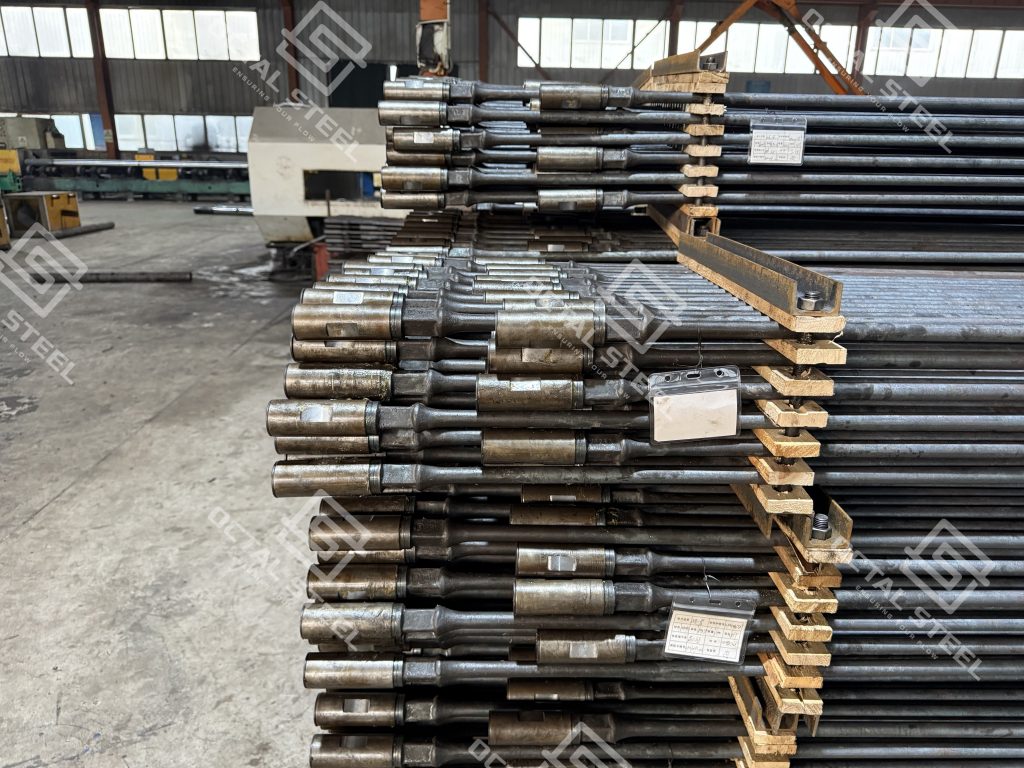
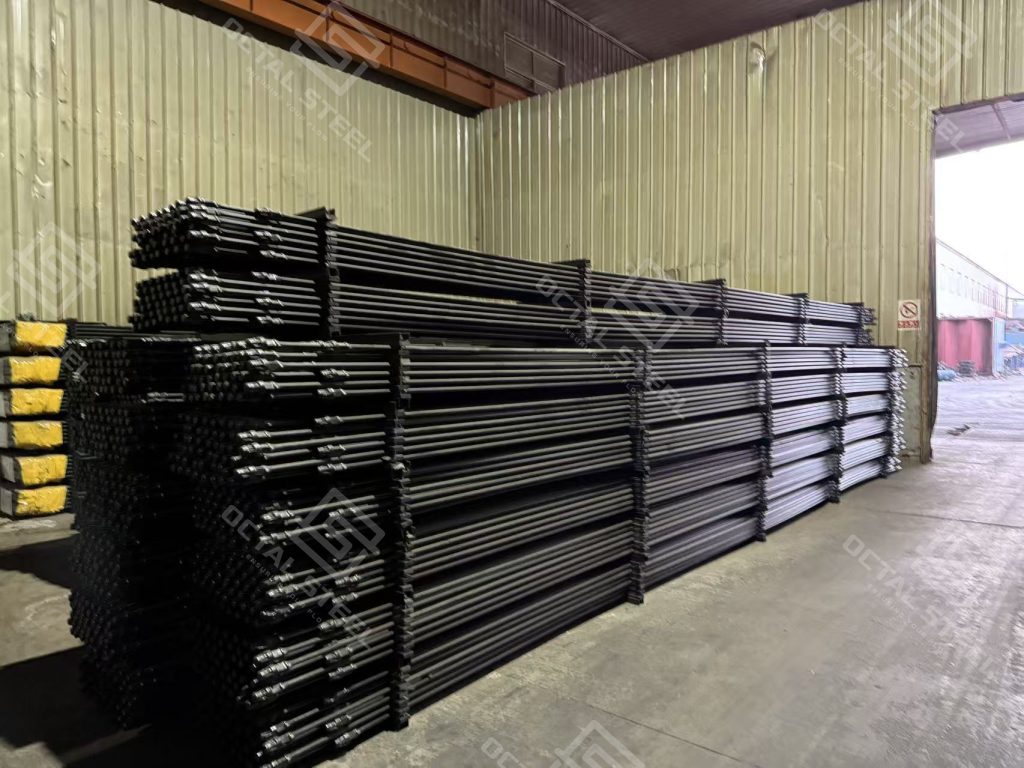
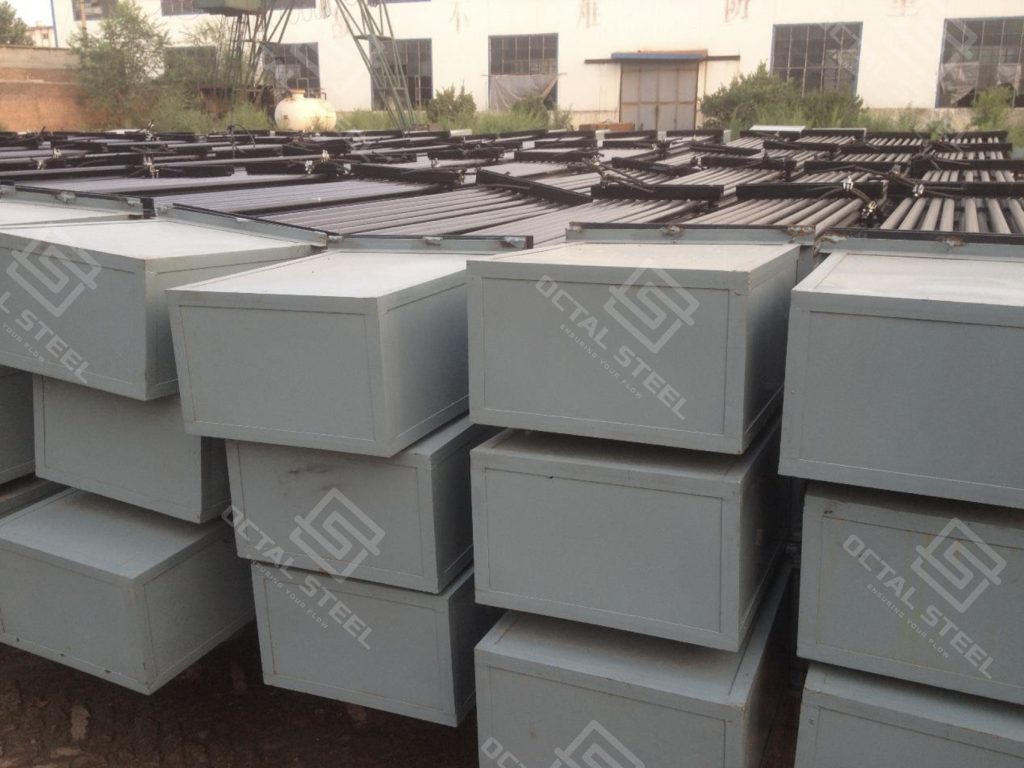
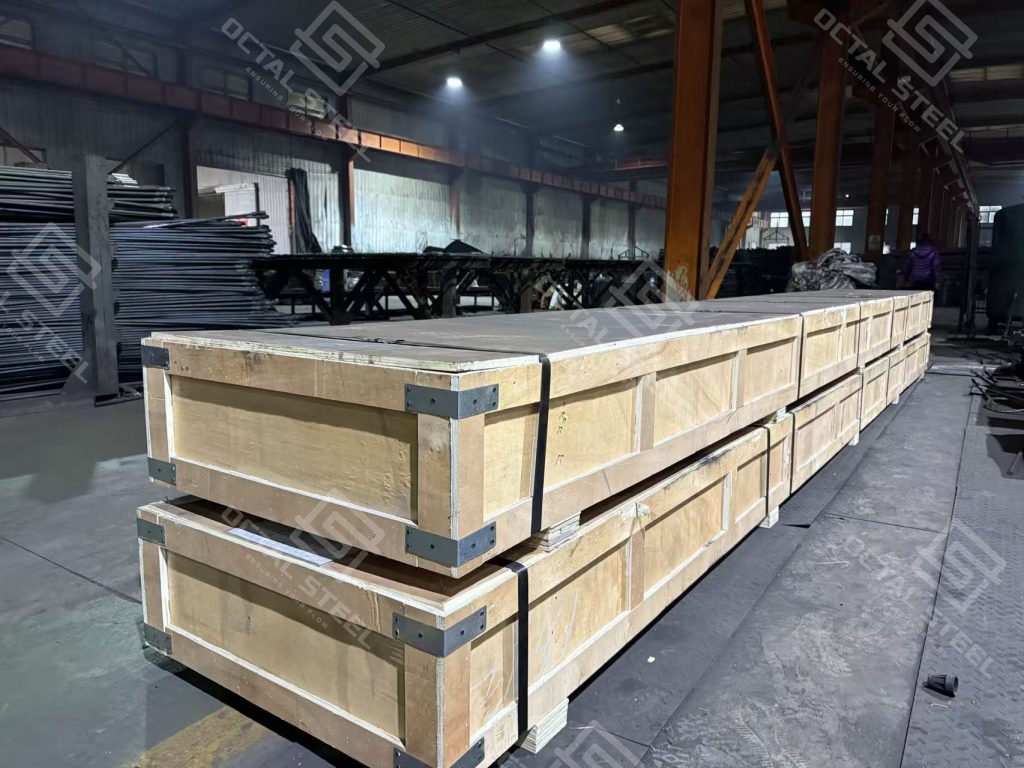
Social Share

